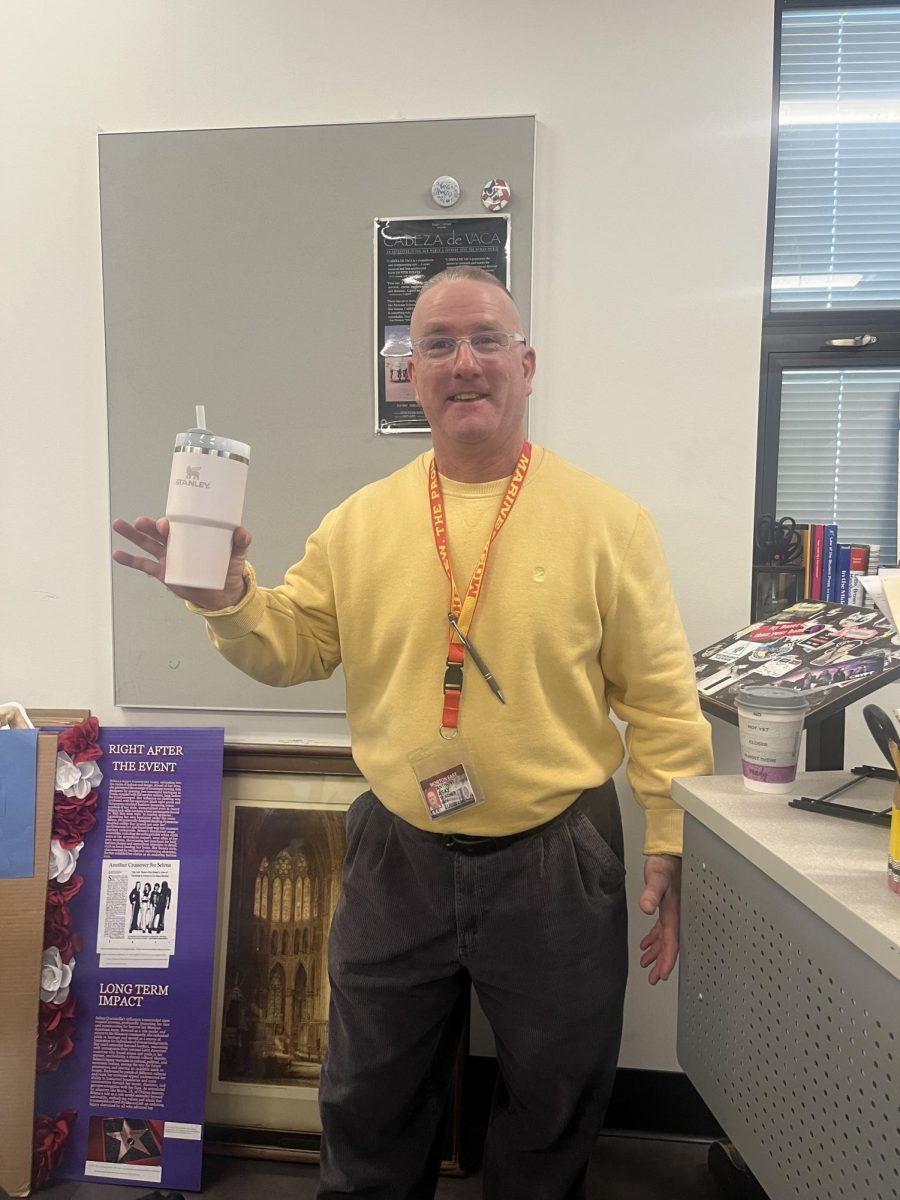In a survey conducted with 100 Morton East students, 19 said that they own a Stanley Cup.
The craze started over a century ago, mostly used by construction workers. However, in 2017, a popular mommy blog announced new pastel colors for the Stanley Cups. About two years later, they ended up making about 73 million dollars off the product, and in 2023, they made around 750 million dollars.
Many may not know this, but Stanley Cups do have lead in their manufacturing process for their cups. They only pose a risk of lead exposure if the cover on the bottom of the tumbler comes off and exposes the pellet used to seal the cup’s vacuum insulation, a Stanley spokesperson says. “There really is practically zero risk of you ingesting any of the lead that’s in this cup,” says Jack Caravanos, Doctor of Public Health and professor of environmental public health sciences at New York University’s School of Global Public Health.
” I have seen the videos of people waiting outside of Target or buying resale cups for hundreds of dollars. To me, I think it’s just a cup, and I wouldn’t personally spend that time or money just to get a certain cup, but to each their own. From what I’ve read about lead being in the cup, it shouldn’t impact the water in the cup because the lead is on the bottom of the cup, sealed. I suppose if that seal were to break, then it could potentially harm the consumer, but I only use the cup for its intended purpose, and if it were to break, I would stop using it,” said U.S. history teacher Ms. Couch.
This possible lead issue may keep some teachers and students from actually spending money on Stanley Cups.
“ I know the craze. No, I did not know about lead. I think consumers will not be happy to learn this and will probably do more research on the cups before buying,” said civics teacher Gutheim.
“I think that there is such a big hype right now that people don’t care; they just want to ‘look cool.’ Oh, for sure, we test everything for lead. You can’t even sell or buy a house sometimes without an inspection with a test for lead, and then these people are willingly consuming liquids that have been sitting in a cup mixing with lead? It isn’t even a question,” said Culinary Arts Teacher Ms. Jessica Herrera.
Stanley Cups are being used more for “style and status,” spending lots of money’s worth just to have a collection.
“I am aware of the Stanley Cup craze, so much so that a few of my students carry them around from class to class. I heard somewhere about them having lead in them, but I didn’t pay it much attention since I myself do not own one. I also do not plan on buying one since they are so expensive. I think people are using them more as symbols of status than anything else. I think those who were thinking about buying one may have been deterred by the lead report; however, I think that the people that already own one are going to keep using and buying more cups because it has become just a collector’s item. I do believe that it will become a massive environmental problem. Their company is going to have to come up with a recycling program of some sort. Scrub Daddy, the dish sponge brand did something similar, where you can mail in your old sponges, and they give you a $2 credit per sponge as part of recycling efforts because they were facing backlash over how it’s going to be bad for the environment,” said civics teacher Ms. Sofia Sandoval.
“I am aware of the Stanley craze and yes, I have seen a few posts online that people have tested the cups for lead, and it tested positive. If this is true, that could definitely affect the well-being of the consumers,” said Math teacher Ms. Alyssa Loizon.
The Stanley craze might go down once more people know the truth behind the cups.
“I am very aware of the Stanley Cup craze. I have recently been told by friends through social media that people have done at-home tests about the cups having lead in them but have not seen anything from the company about these videos or looked more into it myself. I think this will affect the consumers very much and stop the Stanley Cup craze and affect the company as well,” said Science teacher Ms. Samantha Letkiewicz.
“I own the Stanley Cup; I am aware there is a lead pellet in the bottom of my cup. Since the lead can only be exposed if the cup is damaged, it does not affect my opinion on Stanley Cups. I will continue to use it, though, because it keeps my water ice cold all day!” said Senior Madison Schwartz.
Unlike Madison, others do not have the same opinion as her.
“I don’t own a Stanley Cup; it is pointless. They’re like every other cup,” said Senior Dalia Vanegas.








